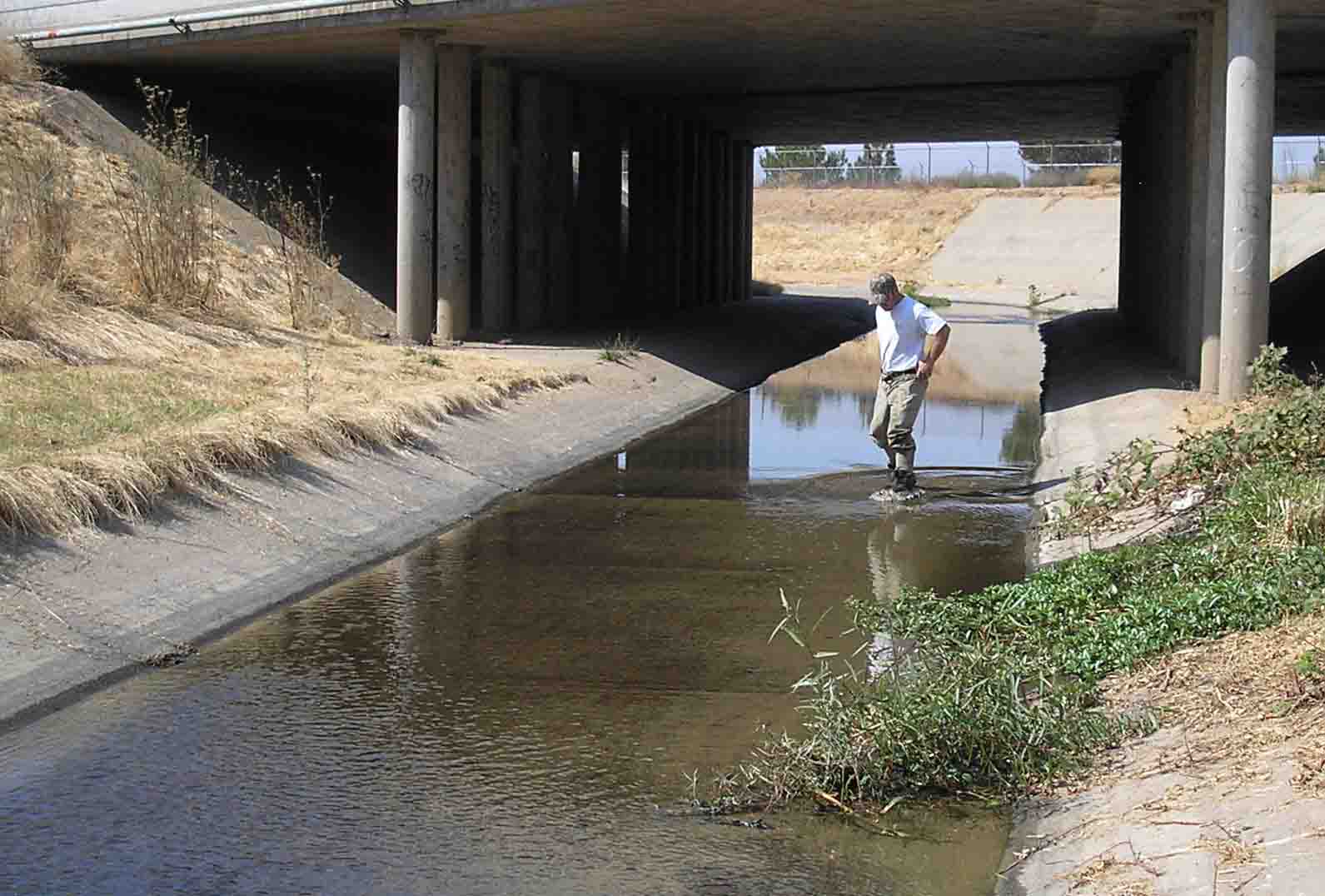Study probing how to apply bioassessment tools to modified channels statewide

SCCWRP has launched a three-year effort to explore when and how bioassessment scoring tools should be used to evaluate the health of California streams that have been modified through channel hardening – an unresolved, often-debated issue that has complicated more widespread adoption of these tools.
The project, which kicked off in early August, involves running analyses on bioassessment scores for modified channels in multiple regions of California. Researchers will work to develop guidance and recommendations that help stream managers better understand potential appropriate uses – and limitations – of these tools.
Bioassessment scoring tools like the California Stream Condition Index (CSCI) and the Algal Stream Condition Index (ASCI), both co-developed by SCCWRP, are the focus of ongoing management efforts to more effectively protect the biological integrity of wadeable streams statewide.
Although these tools provide key insights about overall stream health by evaluating the composition of sentinel in-stream biological communities, modified channels tend to score uniformly lower with bioassessment indices than other stream types do – a phenomenon that persists even when water quality in modified channels is relatively good.
As a result, managers may lack effective options that they can implement to improve bioassessment scores in modified channels – short of removing or extensively modifying the hardening features altogether, which would be a costly option that could compromise flood control.
SCCWRP’s statewide study will examine the factors and conditions that constrain managers’ ability to boost bioassessment scores and achieve water-quality goals for modified channels.
The goal is to build a strong technical foundation for managers, so they can make informed, transparent decisions about when and how to apply bioassessment scoring tools to modified streams.
During the study, SCCWRP will select regions from across California based on geography and land use, and identify types of channel modifications that commonly occur in each. Then, researchers will examine the ranges of bioassessment scores within each modified channel type, and analyze how scores are influenced by various environmental stressors.
Researchers are tentatively planning to focus on agricultural regions in Southern California, the Central Valley and the Central Coast, as well urban areas outside of Southern California. Modified channels in urban Southern California already have been studied.
Previous SCCWRP research with the Southern California Stormwater Monitoring Coalition (SMC) has underscored the limitations of using stream bioassessment tools as the basis for protecting the health of the region’s modified channels:
» In a 2015 study evaluating the performance of the CSCI – a bioassessment index that uses benthic macroinvertebrates to score stream health – researchers found that Southern California modified channels achieve lower-than-expected bioassessment scores even in the absence of environmental stressors that bring down scores for other types of streams. The study concluded that channel hardening itself was likely responsible.
» A follow-up 2017 study evaluating the performance of the ASCI – which uses algae to score stream health – found that bioassessment scores in modified channels were not correlated with gradients in water quality, suggesting that even if managers made water-quality improvements to modified channels, it would be unlikely to boost bioassessment scores.
Researchers are soliciting partners to help select study regions, and to help identify major types of channel modification in each region.
For more information, contact Dr. Raphael Mazor.
More news related to: Bioassessment, Top News